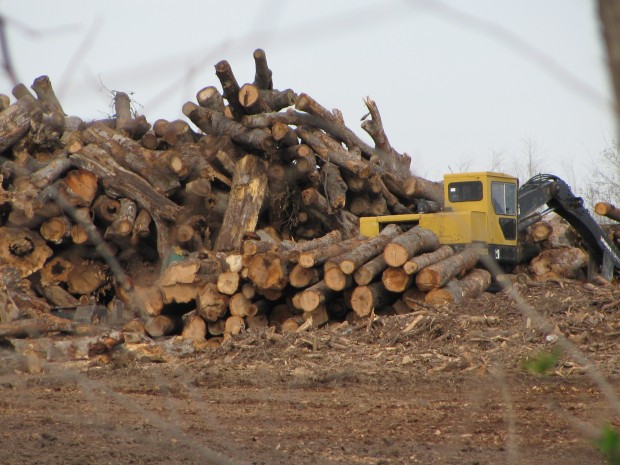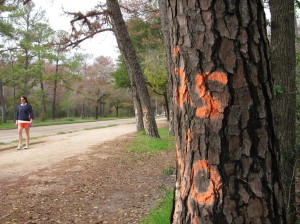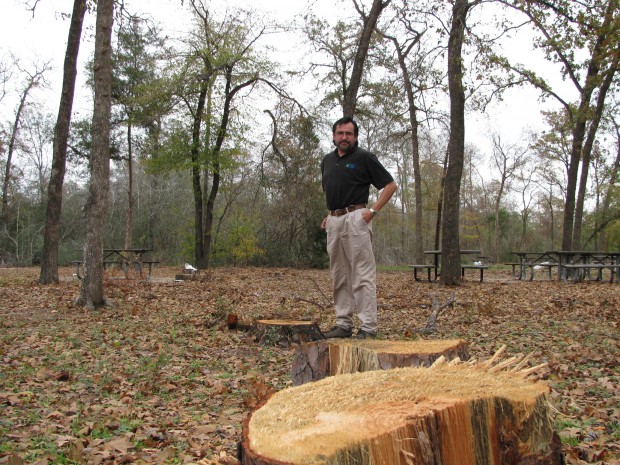The Race to Salvage Millions of Dead Trees in Texas

Dave Fehling / StateImpact Texas
Dead trees are cut, some made into chips south of downtown Houston .
The Texas drought killed millions of trees this summer but only a small percentage will be salvaged for lumber or even wood chips according to state’s Forest Service. And time may be running out.
“If you wait too long, they will not be suitable for most forest products. Decay will set in and the trees will become much less useful,” said Burl Carraway, head of Sustainable Forestry at the Texas Forest Service office in College Station.
Carraway told StateImpact Texas that after a tree dies, it’s salvageable for another four months at best. The challenge is getting to the dead trees in time: many are deep within forests or on private land that may be inaccessible.
After past natural disasters including Hurricanes Rita and Ike, the Forest Service estimated that less than 10 percent of downed trees were ever salvaged. The forest service expects even less to be salvaged from the drought since the dead trees are scattered more widely than after a hurricane, making it less cost effective to gather them up.
The Texas Forest Service estimates that so far, the drought has killed 100 million to 500 million trees statewide. One of the hardest hit areas is Houston. So far, the city’s parks department has overseen the removal of 8,000 dead trees—mostly pines—-with another 6,000 marked with fluorescent paint and slated for the axe in the next month.
“It’s really sickening. It’s so dramatic, so catastrophic,” said Victor Cordova. He’s an urban forester with the City of Houston. He said picnic areas that previously were well-shaded by 30 year old pines are now open and filled with sunlight. It’s hard to walk more than a few feet without stubbing your toe on a freshly cut tree stump.

“If you wait too long, they will not be suitable for most forest products. Decay will set in and the trees will become much less useful,” said Burl Carraway, head of Sustainable Forestry at the Texas Forest Service office in College Station. “In our lifetime, we’ll never see this park the way it was once before,” said Cordova.
But Houston is one place where the dead trees, at least the ones from city property, are being salvaged. Just south of downtown, piles of timber are being turned into giant mounds of wood chips.
The Texas Forest Service’s Burl Carraway said wood chips from salvaged trees are being used to fuel generators to make electricity at two different facilities, one in Nacodoches, the other in Lufkin. Trees in better condition can be used to make lumber.
The best news may be what Carraway said he found in Bastrop State Park, decimated by fires this past September.
“And here we are just a few months later and we’re seeing some of the hardwood trees that are sprouting back from the base of the trees, which will then become the next generation of trees. So the point is the forests are very resilient , they can come back from these natural disasters.”



